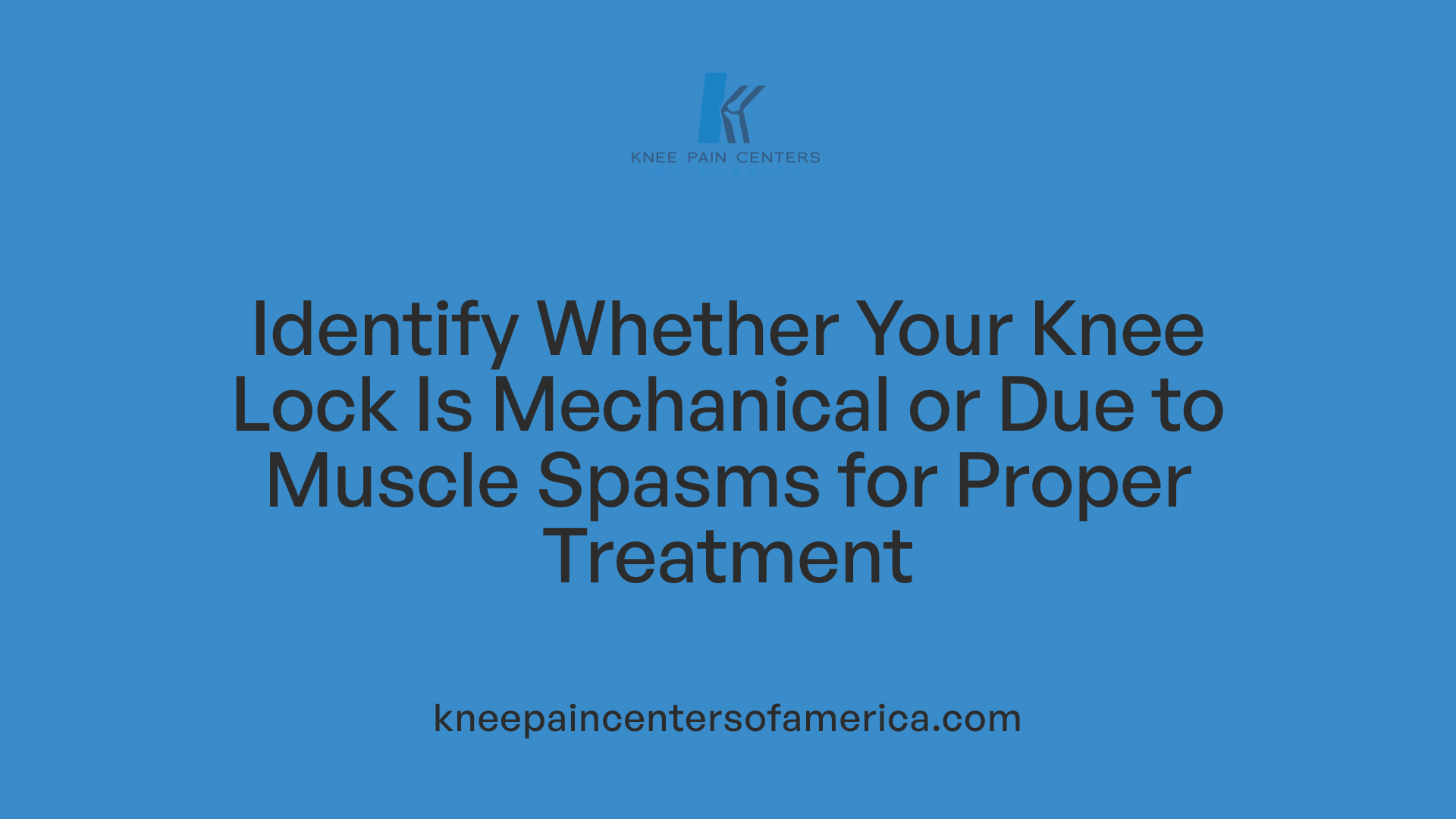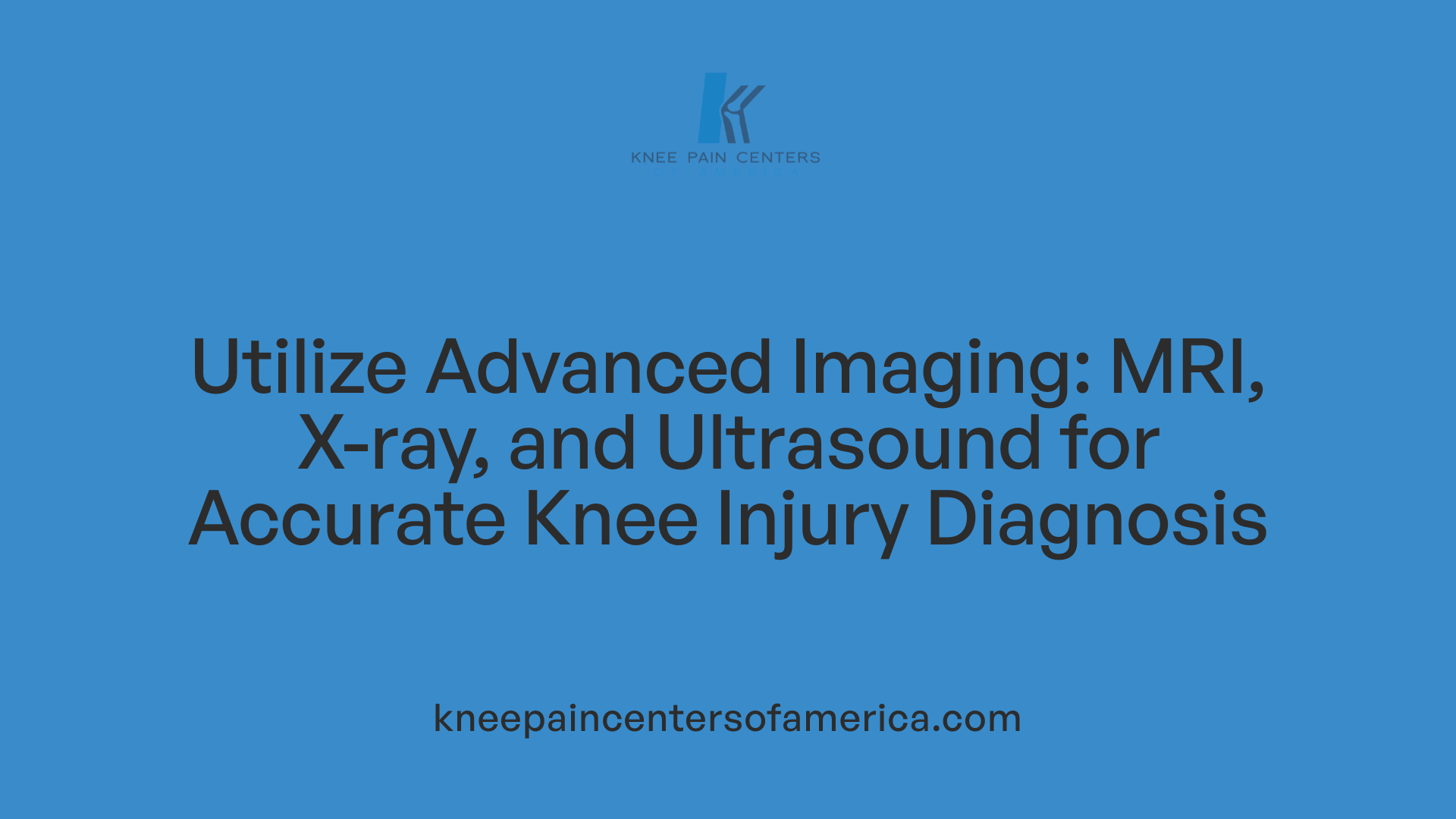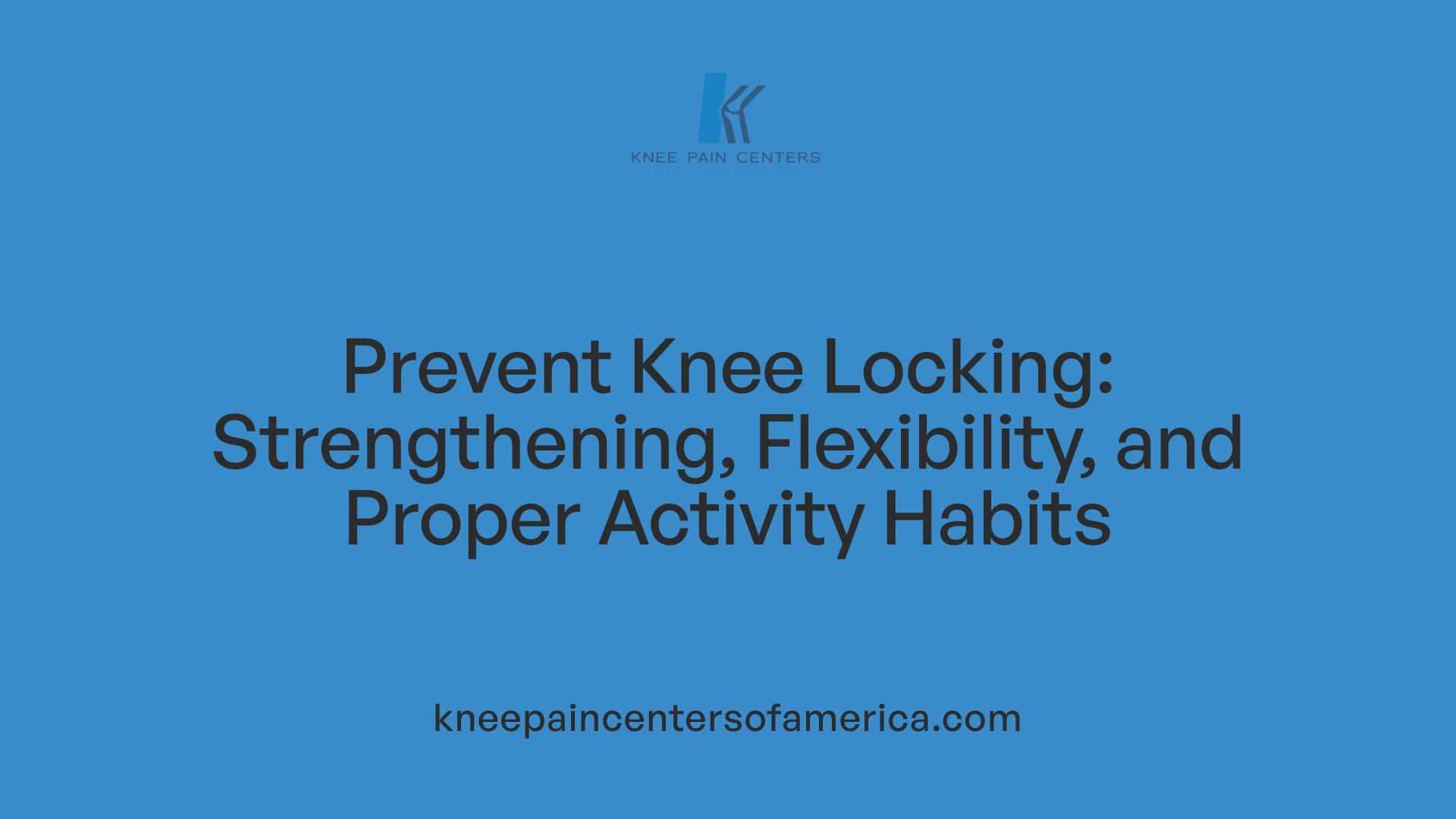Comprehending the complexities of knee locking when bent
Knee locking when bent can significantly impair mobility and quality of life. Recognizing the difference between mechanical obstructions and pain-induced locking is crucial for proper diagnosis and treatment. This article explores the causes, symptoms, medical reasons, and management strategies for knee locking, providing a comprehensive guide to understanding this common yet often misunderstood issue.
Types of Knee Locking: True Lock and Pseudo Lock

What is a pseudo-locked knee?
A pseudo-locked knee occurs when the knee appears to be stuck or unable to move fully, but the reason is not due to a mechanical obstruction within the joint. Instead, the condition results from severe pain that triggers muscle spasms or contractions, which temporarily hinder movement. Common causes include inflammation, bursitis, tendinitis, dislocation of the patella, or other pain-related issues. The muscle spasms act as a protective response, preventing further injury.
Treatment mainly involves resting the knee, applying ice, taking pain-relief medications, and addressing the underlying condition. Surgery or invasive procedures are rarely necessary unless the underlying issue does not improve with conservative care.
What are the common causes of knee locking when bent?
Knee locking when bent can stem from mechanical problems or muscle function issues. True locked knee results from objects physically blocking joint movement, such as a torn meniscus, loose cartilage, or bone spurs. These obstructions trap or interfere with the sliding movement of the knee joint.
In contrast, pseudo locking arises from pain or inflammation that causes muscles to spasm or tighten, making it difficult to straighten or bend the knee without any actual physical obstacle. For example, meniscus tears often cause the knee to catch or lock, especially during twisting movements. Conditions like arthritis, ligament injuries, or patellar dislocation can also impair normal motion temporarily or permanently.
When should I seek medical attention for knee locking issues?
Immediate medical attention is advised if your knee lock follows a traumatic injury, such as a fall or blow, and you cannot bear weight, experience intense pain, swelling, or deformity. If your knee remains locked and you cannot fully straighten or bend it, or if you notice an abnormal bump, popping sounds, warmth, redness, or severe pain, you should consult a healthcare provider promptly.
Persistent locking that does not improve with self-care or recurring episodes should also be evaluated. Seek emergency care if the knee is severely swollen, unstable, or associated with signs of infection like fever or redness.
How is a locked knee treated and managed?
Treatment depends on the underlying cause. For pseudo-locking caused by pain or muscle spasms, conservative approaches like rest, ice, compression, elevation, and anti-inflammatory medications can alleviate symptoms.
When mechanical obstruction is responsible, as with meniscus tears or loose bodies, surgical procedures such as arthroscopy are often required to remove or repair damaged tissue.
Physical therapy can help strengthen surrounding muscles, improve flexibility, and restore joint mobility. In some cases, braces or supportive devices are recommended. Preventative care including regular leg strengthening exercises, warming up before activity, and avoiding unnecessary stress on the knee can reduce the risk.
What conditions commonly lead to knee locking?
Conditions that lead to true locking include meniscus tears, especially large fragments or bucket-handle tears, loose cartilage or bone fragments, and ligament injuries like ACL tears. Osteoarthritis causes locking via joint degeneration, bone spurs, and loose debris.
Other causes include patellar dislocation, plica syndrome—where inflamed folds interfere with joint movement—and intra-articular cysts, such as Baker’s cyst. These conditions result in physical blockage or catching within the joint, preventing full movement.
What are the medical reasons for a knee to become locked or catch during movement?
Knee catching or locking often results from mechanical issues within the joint. The most common is a torn meniscus, which can form a flap that becomes caught between the femur and tibia. Loose bodies like bone chips or cartilage fragments can also obstruct movement.
Ligament tears, such as ACL or PCL injuries, may cause tissues to catch or get trapped. Dislocated kneecaps or bone spurs from osteoarthritis may also interfere with smooth motion.
Pure pseudo locking results from pain, inflammation, or muscle spasms, not an actual physical barrier. Recognizing whether the lock is due to mechanical obstruction or pain response is crucial for appropriate treatment.
| Aspect |
True Locked Knee |
Pseudo Locked Knee |
Additional Details |
| Cause |
Mechanical blockage (cartilage, fragments, ligament) |
Pain-induced muscle spasms or inflammation |
True lock involves physical obstruction; pseudo lock is functional. |
| Symptoms |
Inability to straighten fully, pain, swelling |
Pain, locking sensation, knee catching, looseness |
True lock often feels stuck; pseudo lock may resolve with rest. |
| Common Causes |
Meniscus tears, loose bodies, ligament tears |
Inflammation, bursitis, patellar dislocation |
Both can occur after trauma or degenerative changes. |
| Treatment Approach |
Surgery (arthroscopy), physical therapy |
Rest, anti-inflammatory drugs, physical therapy |
Surgical removal of obstructions or repair is common for true lock. |
| When to Seek Help |
Sudden trauma, inability to move, severe pain |
Persistent locking, significant pain, inability to straighten |
Immediate care for severe cases to prevent further damage. |
Understanding these different causes and manifestations of knee locking enables appropriate diagnosis and treatment planning, whether through conservative management or surgical intervention.
Diagnostic Approaches and When to See a Specialist

How is a locked knee diagnosed?
Diagnosing a locked knee involves a detailed physical exam by a healthcare professional. The doctor will assess your joint’s ability to bend and straighten, check for swelling, tenderness, and stability, and look for signs of injury. To get a clearer picture of the internal damage, imaging tests such as X-rays are often used to detect bone spurs, loose bodies, or joint damage. MRI scans provide detailed images of soft tissues like menisci, ligaments, and cartilage, helping to identify tears or other injuries that could cause locking. Ultrasound can also be used to evaluate inflammation, fluid buildup, or soft tissue injuries.
Early and accurate diagnosis is crucial to determine whether the knee lock is due to a mechanical obstruction needing surgery or if it’s a pseudo-lock caused by pain or muscle spasms. This clarity helps avoid further joint damage and guides appropriate treatment strategies.
When should I seek medical attention for knee locking issues?
You should seek urgent medical care if your knee locking follows a recent injury, especially if there’s severe pain, swelling, deformity, or inability to bear weight. Persistent locking that lasts more than a few days, or if the knee becomes red, warm, or shows signs of infection like fever, needs prompt evaluation.
Additional warning signs include inability to fully straighten or bend the knee, a noticeable bump, or sensations like popping or catching during movement. These symptoms might indicate a mechanical problem that requires immediate intervention to prevent long-term joint damage.
Timely medical assessment through physical examination and imaging enables appropriate treatment — whether conservative methods like physiotherapy or surgical procedures — ensuring better recovery outcomes.
What are the diagnostic tools used for knee locking?
Diagnosing the cause of a knee lock involves several tools. Physical examination assesses range of motion, joint stability, swelling, tenderness, and any abnormal joint movements. Imaging techniques play a vital role in pinpointing the problem.
MRI scans are particularly useful for soft tissue injuries such as meniscus tears or ligament damages. X-rays can reveal bony issues like loose fragments, bone spurs, or joint space narrowing due to arthritis. Ultrasound is helpful for evaluating inflammation, fluid accumulation, or soft tissue injuries, especially in muscles and tendons.
Using these diagnostic methods allows doctors to distinguish whether the knee lock stems from a mechanical obstruction, such as a torn meniscus or loose body, or from pain and spasms associated with inflammation or soft tissue injuries. Accurate diagnosis guides the treatment plan, indicating whether surgery or conservative therapies are appropriate.
Preventive Measures and Long-term Management

What are the preventive measures for knee locking?
Maintaining overall knee health is crucial in preventing episodes of locking. Regularly performing exercises that strengthen the muscles surrounding the knee, such as quadriceps, hamstrings, and calf muscles, helps stabilize the joint and reduce the risk of injuries like meniscus tears or ligament damage.
Flexibility exercises and gentle stretching routines also play an important role. Stretching the hamstrings, quadriceps, and calf muscles can prevent tightness that may contribute to mechanical problems within the knee.
Avoiding high-impact activities or contact sports that pose a significant risk of trauma to the knee is advisable, especially for individuals with prior knee issues. Instead, opting for low-impact exercises such as swimming, cycling, or walking can keep joints active without excessive strain.
Using knee braces or supports during strenuous or high-risk activities can provide additional stability, especially for those with pre-existing instability or previous injuries.
For people with ongoing joint problems, regular check-ups with healthcare providers are essential. Early intervention at signs of soreness, swelling, or instability can prevent more severe conditions like meniscal tears or ligament injuries, which are common causes of true knee locking.
How can knee locking be prevented or managed in the long-term?
Consistent engagement in a tailored exercise program focusing on muscle strengthening and improving flexibility can help manage the risk of knee locking over time. Activities such as swimming, cycling, or specific physiotherapy routines are gentle on the joints while maintaining flexibility and strength.
Warm-up routines before any physical activity and proper cool-down after help prepare the knee tissues and prevent injury.
Monitoring symptoms and seeking early medical advice when experiencing pain, swelling, or instability can impede progression to severe joint damage. Timely treatment of minor issues keeps the joint healthy.
Supportive measures like knee braces, taping, or orthotics can provide additional stability for individuals with inherent joint weaknesses or previous injuries.
When necessary, medical interventions such as physiotherapy, minimally invasive surgeries like meniscal repair, or removal of loose bodies can prevent recurrent episodes of locking. Adopting a healthy lifestyle—avoiding obesity and maintaining an active routine—also benefits long-term joint health.
In summary, preventive strategies and careful management through exercise, activity modification, supportive devices, and medical care are essential to preserve knee function and prevent locking episodes, enabling individuals to maintain an active, pain-free life.
Empowering Yourself to Address Knee Locking
Knee locking when bent is a multifaceted issue that requires understanding its underlying causes for effective management. Whether it stems from mechanical obstructions like meniscus tears or from pain-induced muscle spasms, early diagnosis and tailored treatment are paramount. Preventive measures, timely medical intervention, and awareness of symptoms can significantly improve recovery and prevent long-term joint damage. If you experience persistent or severe locking, consult a healthcare professional promptly to determine the appropriate course of action and restore proper knee function.
References